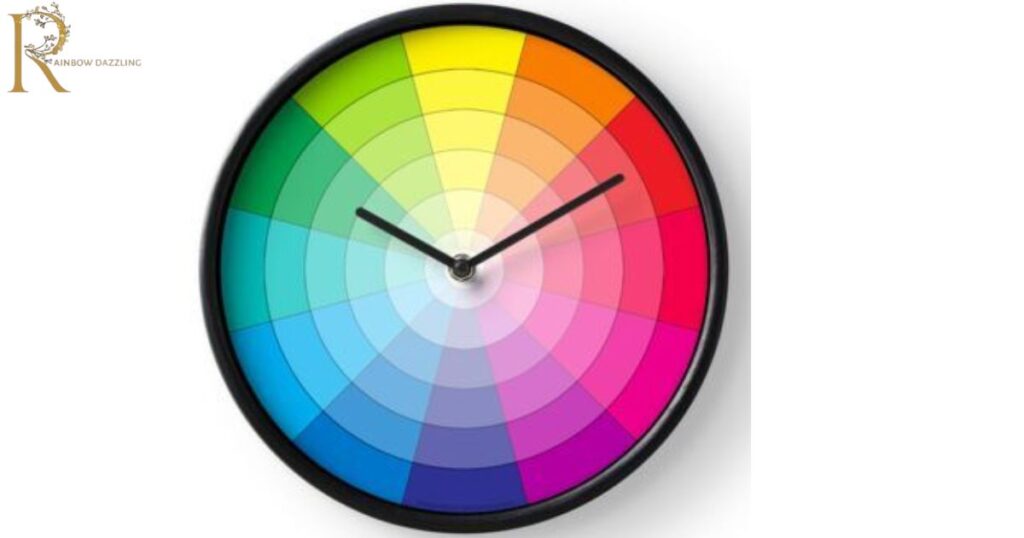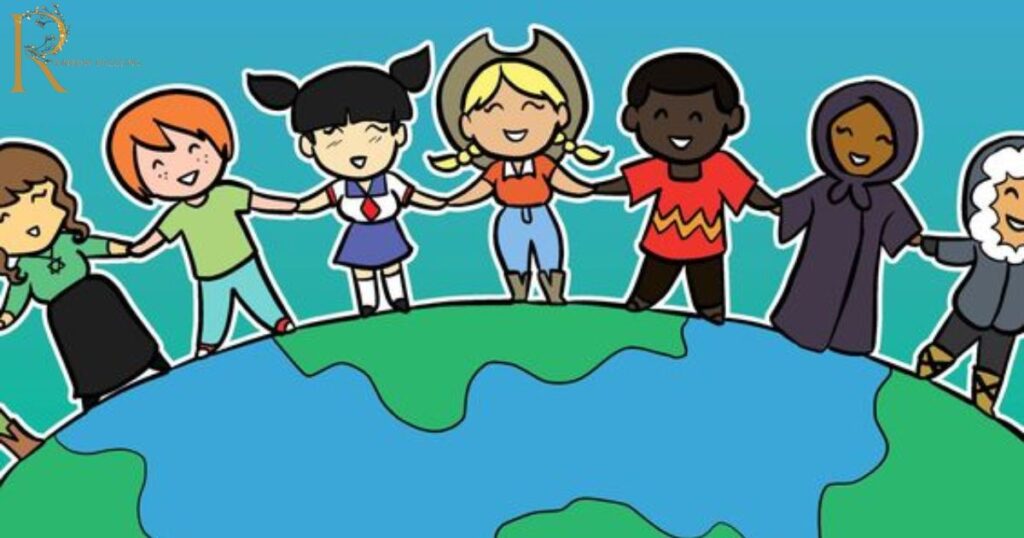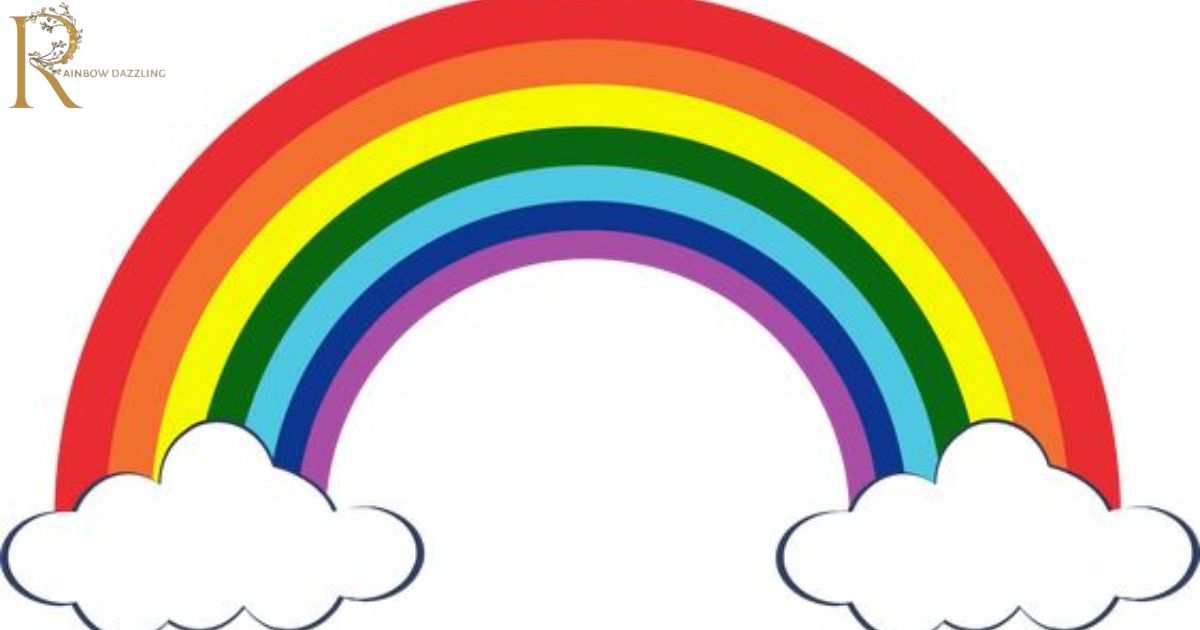The colors of the rainbow are red, orange, yellow, green, blue, indigo and violet. They form a beautiful spectrum seen after rain or when light is refracted.
This vibrant sequence of colors is often remembered using the acronym ROYGBIV. Each color corresponds to a different wavelength of light creating the stunning display we commonly associate with rainbows. The colors of the Rainbow are not only meteorological wonders but also cultural symbols of hope and diversity. The phenomenon occurs when sunlight interacts with raindrops in the atmosphere, bending and separating into its colorful components.
The colors of the Rainbow result from sunlight refracting through raindrops revealing a spectrum of colors. ROYGBIV stands for red, orange, yellow, green, blue, indigo, and violet in their sequential order. Beyond meteorology the colors of the rainbow often symbolize positivity and diversity.
Sunlit Color Display

Sunlit Color Display refers to the enchanting phenomenon of the colors of the rainbow where sunlight interacts with raindrops creating a vibrant spectrum of colors.
This captivating display occurs when sunlight is refracted or bent as it passes through raindrops in the atmosphere.
The different colors from red to violet emerge in a distinct sequence forming the familiar arc we associate with the colors of the rainbow.
Certainly! Here’s the updated paragraph:
Each color in the Sunlit Color Display corresponds to a specific wavelength of light revealing the scientific intricacies behind this natural marvel. What Are The Colors Of The Rainbow?
The acronym ROYGBIV helps us remember the sequence: red, orange, yellow, green, blue, indigo and violet.
Beyond its meteorological significance the Sunlit Color Display holds cultural symbolism often representing hope, diversity and the beauty found in nature’s simple interactions.
ROYGBIV Spectrum

The ROYGBIV Spectrum is a colorful sequence representing the different wavelengths of light found in a the colors of the rainbow. ROYGBIV stands for red, orange, yellow, green, blue, indigo and violet the specific hues that form the spectrum.
This sequence observed in the natural world during phenomena like the colors of the rainbow showcases the fascinating dispersion of sunlight.
Understanding the ROYGBIV Spectrum involves recognizing that each color corresponds to a unique wavelength with red having the longest and violet the shortest. This arrangement highlights the dispersion of light a process where light is separated into its individual components.
The ROYGBIV Spectrum not only explains the scientific aspect of the colors of the rainbow but also adds a touch of wonder and beauty to our perception of the world around us.
Meteorological Marvels

Meteorological Marvels encompass a fascinating array of natural phenomena that occur in the Earth’s atmosphere. From the colors of the rainbow and lightning to tornadoes and hurricanes these events showcase the dynamic and powerful forces at play in our planet weather systems.
Meteorologists study these marvels to better understand and predict atmospheric conditions, contributing to advancements in weather science and the ability to mitigate the impact of severe weather events.
The study of Meteorological Marvels not only aids in scientific research but also plays a crucial role in ensuring public safety. By unraveling the complexities of weather patterns, meteorologists can provide early warnings and accurate forecasts.
Allowing communities to prepare for and respond to potential hazards. The ongoing exploration of meteorological marvels not only deepens our understanding of the natural world but also underscores the importance of adapting to and respecting the powerful forces that shape our environment.
Symbolism of Rainbows
The colors of the Rainbow are universally recognized as symbols of hope, representing the promise of better times after storms.
- Their spectrum of colors is often embraced as a metaphor for the diversity of people, cultures and experiences.
- Many societies incorporate the colors of the rainbows into myths, folklore and religious symbolism attributing various meanings to these vibrant arcs.
- The vibrant and uplifting nature of the colors of the rainbow often serves as a visual reminder to stay positive and resilient in the face of challenges.
- Rainbows are commonly associated with LGBTQ+ pride, symbolizing inclusivity, acceptance and the beauty of diversity.
- The appearance of a the colors of the rainbow after rain is seen as a symbol of renewal and the start of a new chapter.
- Across different belief systems the colors of the rainbow are seen as bridges between the earthly and spiritual realms carrying messages of blessings.
- The sheer beauty of a the colors of the rainbow is enough to evoke a sense of wonder and appreciation for the natural world.
- Artists often draw inspiration from the colors of the rainbow using their vibrant colors to create visually striking and emotionally resonant works of art.
- Rainbows forge a connection between humans and the environment reminding us of the intricate and magical interactions within the natural world.
Optical Phenomenon Insights
Optical Phenomenon Insights delve into the fundamentals of light refraction, where light changes direction as it passes through different mediums. Understanding how light bends provides insights into the creation of optical phenomena such as the colors of the rainbow and mirages.
Atmospheric Interactions
Optical phenomena often occur in the Earth’s atmosphere where variations in air density and temperature influence the path of light.
Sunsets, halos and coronas are examples of atmospheric interactions that showcase the captivating effects of light in our skies.
Prismatic Effects Explained
The insights into prismatic effects unravel the way light disperses into its various colors creating the mesmerizing spectra observed in the colors of the rainbow and other optical wonders.
Prisms play a crucial role in understanding how white light separates into the distinct hues of the visible spectrum.
Mirage Mysteries Unveiled
Mirages a fascinating optical illusion are explored to understand how the bending of light creates false images often appearing as water on hot surfaces.
Optical Phenomenon Insights shed light on the scientific principles behind mirages adding depth to our comprehension of these intriguing phenomena.
Quantum Mechanics Connection
At a microscopic level quantum mechanics contributes to our understanding of optical phenomena explaining the behavior of photons and their interactions with matter.
Insights into quantum mechanics enhance our grasp of the underlying principles governing the behavior of light in various scenarios.
Human Visual Perception
Optical Phenomenon Insights extend to how humans perceive and interpret these visual marvels, providing an interdisciplinary understanding that combines physics with psychology.
The study of visual perception enhances our appreciation of the intricate ways in which our eyes and brain collaborate to create the optical experiences we encounter.
Wavelengths in Atmosphere

Wavelengths in the atmosphere play a crucial role in shaping the colors we observe in optical phenomena like the colors of the rainbow. When sunlight which consists of different wavelengths, encounters atmospheric particles such as raindrops the varying wavelengths are refracted differently.
This dispersion leads to the formation of a spectrum showcasing colors from red to violet. The longer wavelengths, like red, bend less compared to the shorter wavelengths such as violet resulting in the distinct sequence of colors in the sky.
Understanding the interaction of wavelengths in the atmosphere not only explains the formation the colors of the rainbows but also contributes to our comprehension of other atmospheric phenomena.
The scattering of shorter wavelengths by atmospheric particles gives rise to the blue color of the sky during the day. This intricate interplay of light and atmosphere allows us to unravel the beauty of natural spectacles and provides insights into the physics of our atmospheric environment.
Cultural Significance

The cultural significance of the colors of the rainbow varies across different societies often carrying rich symbolism and meaning. In many myths and folklore rainbows are seen as bridges between the earthly and divine realms serving as pathways for spirits or gods.
They are revered as symbols of good fortune, blessings and the harmonious connection between humanity and the supernatural.
- Cultural Symbolism Hub
- Diverse Meaning Nexus
- Symbolic Heritage Tapestry
- Cultural Embrace Essence
Beyond mythology rainbows hold cultural importance in various religious traditions. In Christianity the rainbow is a symbol of God promise as mentioned in the biblical story of Noah Ark.
In Hinduism the rainbow is associated with Indra the king of gods symbolizing the divine connection between heaven and Earth. Embraced globally rainbows are recognized as powerful symbols of hope, diversity and positivity transcending cultural boundaries to evoke a sense of wonder and unity among people around the world.
Light Refraction Magic
Light Refraction Magic unfolds when sunlight interacts with the atmosphere creating mesmerizing optical phenomena. As sunlight passes through raindrops or atmospheric particles the bending of light known as refraction takes place revealing a spectrum of colors.
- Sunlight transforms into vibrant hues through Light Refraction Magic.
- Atmospheric play creates enchanting displays like rainbows and halos.
- Everyday scenes turn extraordinary as light bends in nature’s magic.
- Scientific beauty revealed in the dance of colors through refraction.
- A symbol of elegance, turning simplicity into a captivating spectacle.
This enchanting display seen in rainbows, sunsets and halos adds a touch of magic to our everyday surroundings showcasing the captivating dance of light in the natural world.
The magic of light refraction lies in its ability to transform ordinary moments into extraordinary visual spectacles.
Whether it is the ethereal glow of a sunset or the vivid hues of a rainbow after rain these phenomena remind us of the beauty hidden within the science of light. Light refraction magic invites us to appreciate the wonders that surround us turning the ordinary into the extraordinary with the simple play of sunlight and atmospheric elements.
How do rainbows form?
Rainbows form when sunlight interacts with raindrops in the atmosphere. The process involves the refraction or bending of light as it enters and exits the raindrop. This bending separates the sunlight into its component colors creating the distinct spectrum we see in a rainbow. The result is a beautiful arc of colors with red on the outer edge and violet on the inner edge.
What does ROYGBIV signify?
This mnemonic device helps people remember the order of colors in the visible spectrum. The concept of ROYGBIV is derived from the scientific understanding of light and its dispersion. Each letter corresponds to a specific wavelength of light with red having the longest wavelength and violet the shortest.
Why are rainbows symbolic?
Rainbows are symbolic for various reasons often representing hope and positivity. Their appearance after rain or storms is seen as a promise of better times ahead. Additionally rainbows are embraced as symbols of diversity and inclusion with their spectrum of colors reflecting the beauty found in differences.
Frequently Asked Questions
What causes rainbows to form?
Rainbows form when sunlight refracts through raindrops, separating into the spectrum of colors we see.
Why is ROYGBIV used to represent rainbows?
ROYGBIV is an acronym for the sequence of colors in a rainbow: red, orange, yellow, green, blue, indigo and violet.
What is the cultural significance of rainbows?
Rainbows symbolize hope, diversity and positivity across various cultures, often representing spiritual connections and promises.
How does light refraction create optical phenomena?
Light refraction occurs when light bends producing mesmerizing effects like rainbows, halos and mirages.
Why are rainbows often associated with positivity?
Rainbows appear after storms symbolizing hope and better times ahead contributing to their positive connotations.
Final Thoughts
In exploring the enchanting realms of rainbows, light refraction and cultural significance one finds a harmonious intersection of science and symbolism. The scientific beauty of light bending and creating mesmerizing spectra unveils the intricate dance of wavelengths in the natural world.
This dance not only captivates our senses but also serves as a reminder of the elegance inherent in the simplest interactions of sunlight with the atmosphere.Beyond the scientific allure the cultural significance of rainbows adds layers of meaning to these optical phenomena.
Rainbows symbolize hope, diversity and positivity transcending geographical and cultural boundaries. Their appearance after storms or during moments of atmospheric magic echoes promises of renewal and better times ahead.











